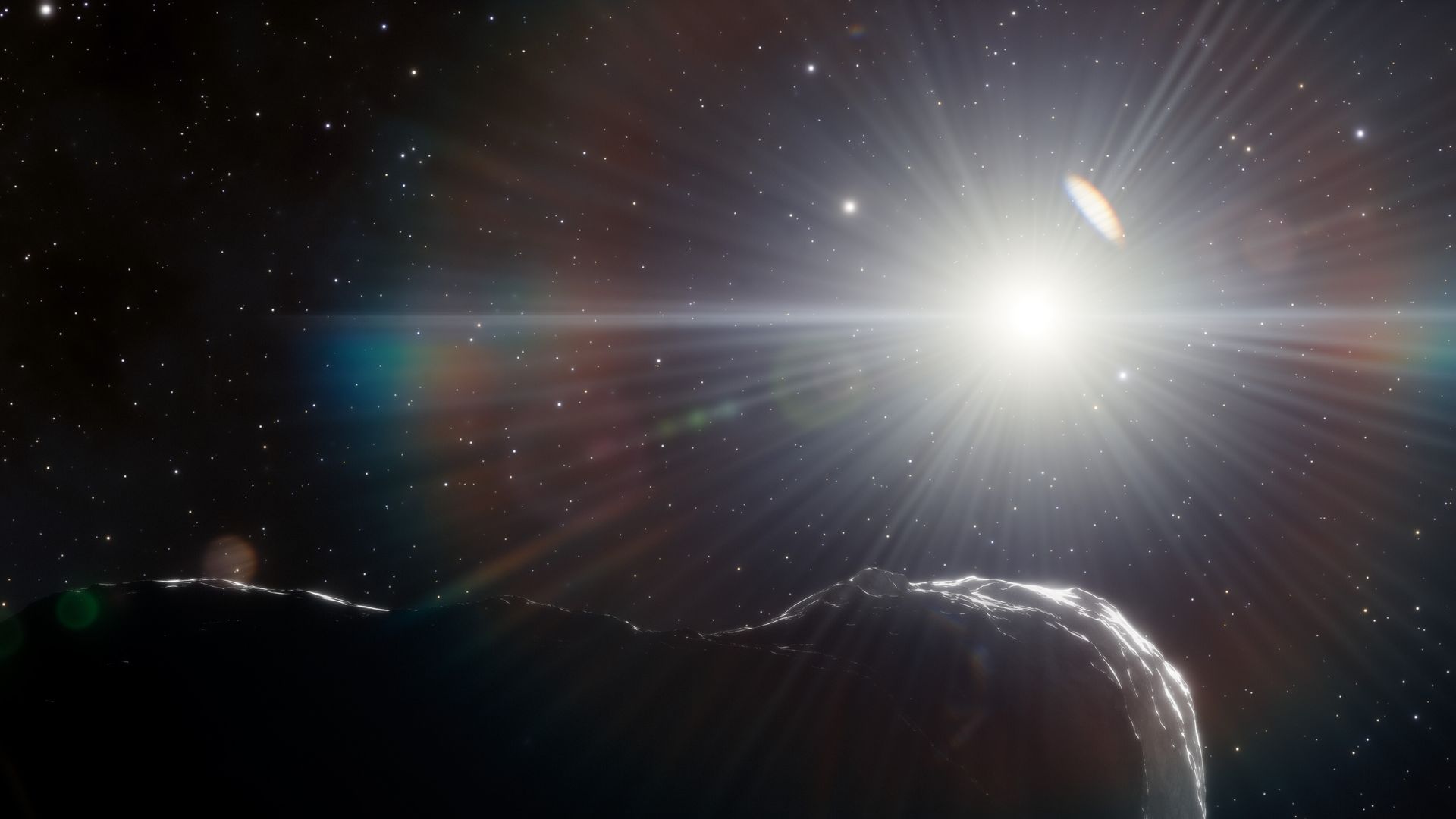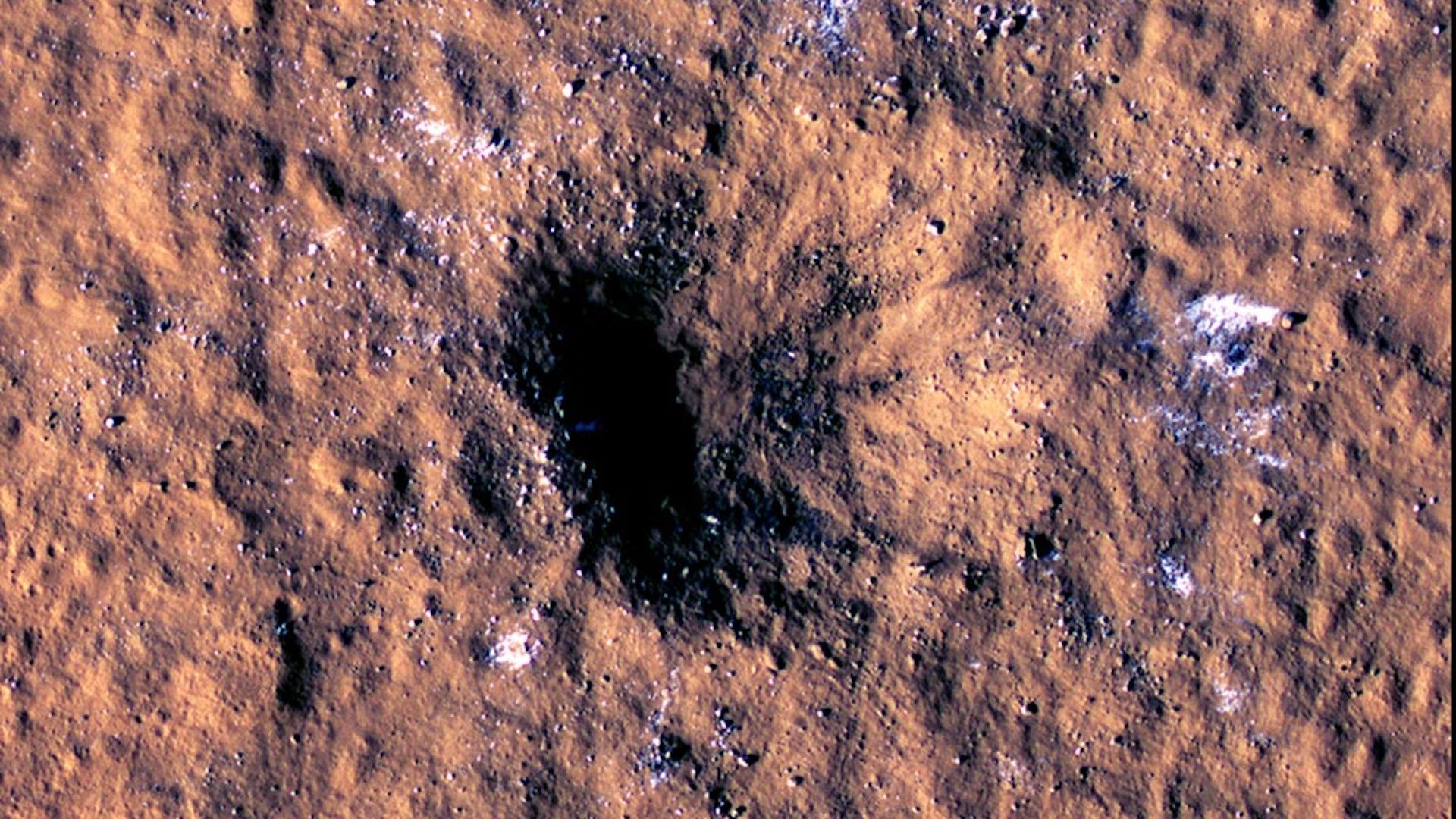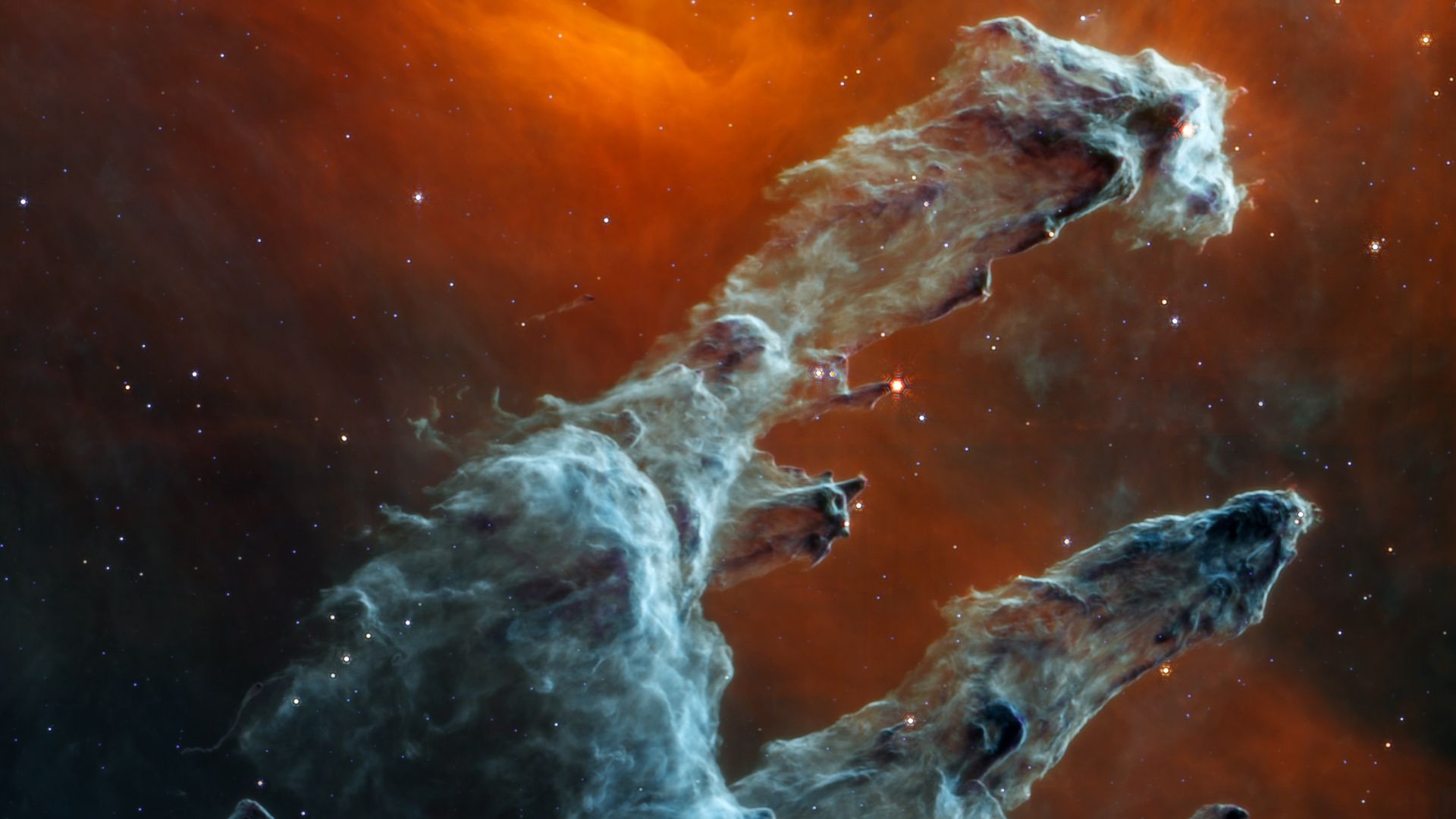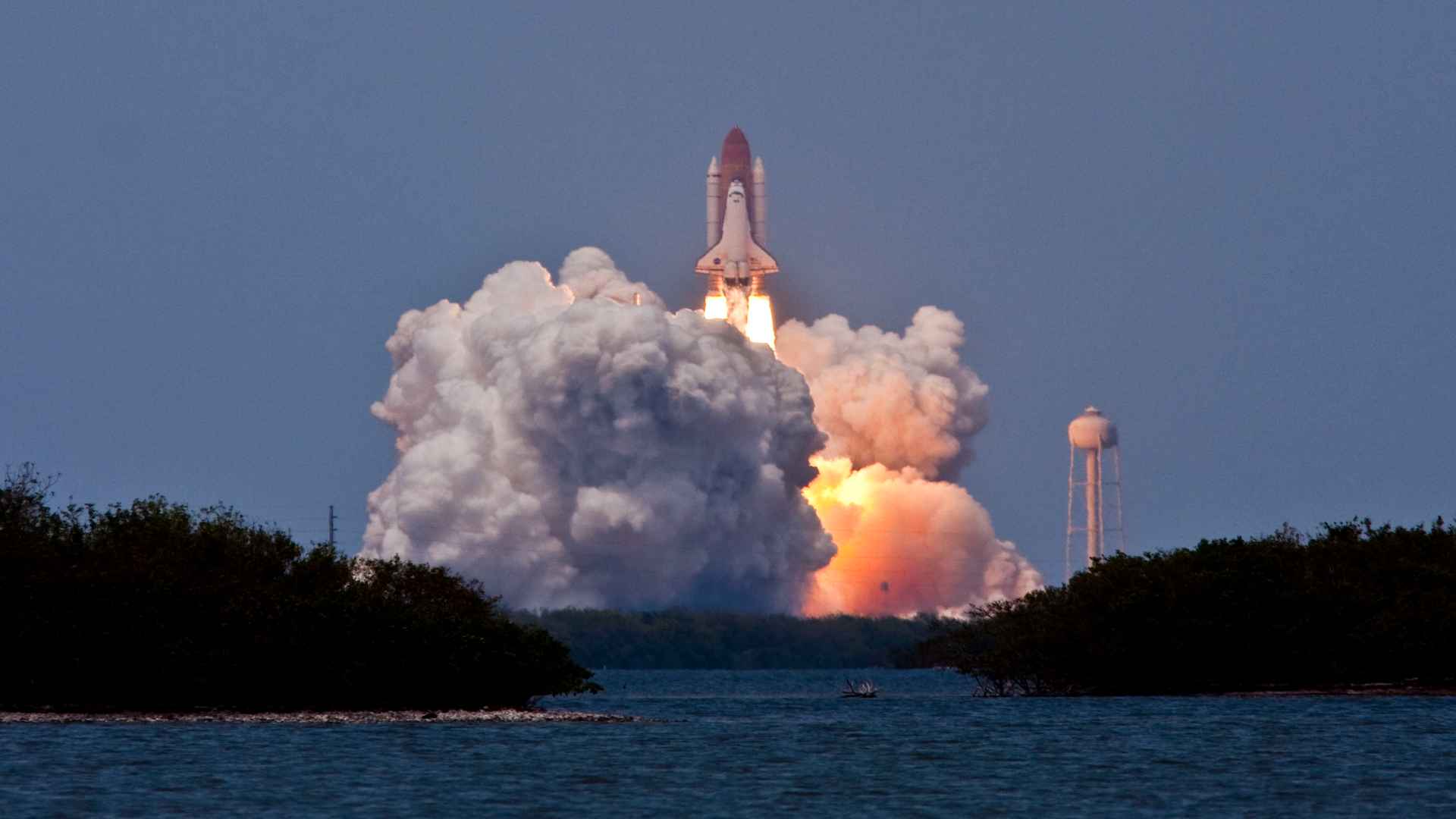| | | | | | | Presented By Equitybee | | | | Axios Space | | By Miriam Kramer · Nov 01, 2022 | | Thanks for reading Axios Space. At 1,521 words, this newsletter is about a 6-minute read. - Please send your tips, questions and planet-killer asteroids to miriam.kramer@axios.com, or if you received this as an email, just hit reply.
| | | | | | 1 big thing: War's next gray area |  | | | Illustration: Natalie Peeples/Axios | | | | Private satellite networks that aid militaries in wartime are becoming potential targets for enemy forces — stoking fears that conflicts on Earth are extending further into space. Why it matters: Space is an essential part of warfighting. Satellites provide situational awareness for troops on the ground, communications and views of the battlefield. Driving the news: Ukraine is relying on SpaceX's Starlink constellation of internet-beaming satellites after Russia cut off internet service to the nation. - Senior Russian Foreign Ministry official Konstantin Vorontsov said last week that commercial satellites could be "legitimate" targets in wartime if used for military purposes.
What's happening: Once-hypothetical questions about wartime norms involving commercial satellites are now real concerns that nations must grapple with. - White House press secretary Karine Jean-Pierre said in response to Vorontsov's statement that any attack on a commercial U.S. satellite would provoke a response from the United States.
- "We will pursue all means to explore, deter and hold Russia accountable for any such attacks," Jean-Pierre said during a press gaggle last week.
The big picture: In the shadow of these escalations and thinly veiled threats, international attention is turning toward establishing norms and rules for behavior in space. - "There's nothing you can point to and say, 'OK, we've all agreed that that's a bad idea,'" the Secure World Foundation's Victoria Samson tells me.
- Establishing international norms would allow nations to point to bad actions in space and say, "This isn't just a geopolitical rival complaining about what you're doing," Samson said. "This is something our international community has come together and identified as something they find incredibly irresponsible or inflammatory."
- The Pentagon is also highlighting the lack of basic norms as a major threat to U.S. assets. "The risk of inadvertent escalation is particularly high due to unclear norms of behavior," among other issues, per a National Defense Strategy report released last week.
Between the lines: The U.S. military has historically relied on large, expensive satellites for situational awareness on the ground. Those spacecraft are obvious targets for attacks. - The National Defense Strategy calls for the creation of constellations of satellites in orbit that are "diverse, resilient, and redundant" — similar to those being built by private companies — that can aid in national security.
- The Space Development Agency (SDA) already has plans to launch a satellite constellation that would distribute sensors used in missile tracking and other military efforts across hundreds of satellites.
Where it stands: Starlink's efforts in Ukraine have also shown the SDA that a distributed network of satellites can aid in military efforts, according to a report from Sandra Erwin at SpaceNews. - Russia has not shot down any Starlink satellites, and if it did, it likely wouldn't take out the full network.
- Cyberattacks against the constellation also haven't been successful.
What to watch: The U.S. has already moved toward establishing a norm in space by saying it would no longer test debris-creating anti-satellite weapons in orbit. Multiple nations have now signed on to that plan. - Those conversations and lines of communication could lead to establishing more norms of behavior, including what is considered appropriate behavior toward private satellites in orbit during wartime.
|     | | | | | | 2. A "planet killer" found |  | | | Artist's illustration of an asteroid in the glare of the Sun. Image: DOE/FNAL/DECam/CTIO/NOIRLab/NSF/AURA/J. da Silva/Spaceengine | | | | Scientists have discovered a "planet killer" asteroid nearly a mile long within the orbits of Earth and Venus. Why it matters: The space rock — named 2022 AP7 — poses no immediate threat to Earth, but its orbit crosses the planet's, making it an important object for scientists to keep an eye on in the future. What they found: 2022 AP7 is thought to be about 0.9 miles long — wide enough that if it hit Earth, a wide swath of the planet would feel the effects. - Details of the newfound asteroid and two others were published in the Astronomical Journal in September and announced in a news release Monday.
- Scott Sheppard of the Carnegie Institution for Science and an author of the study stresses there is no evidence to suggest the asteroid will ever impact Earth, and even if it were to threaten the planet, that would happen thousands, if not millions, of years in the future.
How it works: Researchers using the Dark Energy Camera in Chile discovered the space rock by observing during twilight — a crucial time for ground-based telescopes to find possibly dangerous asteroids usually lost in the glare of the Sun. - The part of the sky where 2022 AP7 was found is particularly challenging to search for asteroids within because astronomers only have two 10-minute windows each night for the survey of the area.
- "Our twilight survey is scouring the area within the orbits of Earth and Venus for asteroids," Sheppard said in the press release. "So far we have found two large near-Earth asteroids that are about 1 kilometer across, a size that we call planet killers."
The big picture: NASA and other space agencies have been focusing on searching for and characterizing possibly hazardous asteroids for years. - Scientists think they've found most of the asteroids near Earth in the size range of 2022 AP7, but other, smaller yet still potentially devastating space rocks have gone undiscovered.
- "Less than half of the estimated 25,000 NEOs that are 140 meters and larger in size have been found to date," according to NASA.
What to watch: NASA recently conducted the successful DART mission that slammed a spacecraft into an asteroid and threw it off its course around another, larger asteroid. - The proof-of-concept mission shows that one day scientists may be able to do the same for an asteroid found on a collision course with Earth.
- NASA is also planning to launch its NEO Surveyor telescope — designed to find dangerous asteroids using infrared light — in 2028. The space-based asteroid-hunting mission is thought to be the major piece of technology needed to find these possibly harmful space rocks.
|     | | | | | | 3. Mars shakes and quakes |  | | | A meteor impact seen on Mars. Photo: NASA/JPL-Caltech/University of Arizona | | | | A NASA lander on Mars felt the shockwaves from a major meteor strike on the Red Planet, according to new studies published last week. Why it matters: The InSight lander's observations are allowing scientists to understand and map the interior and crust of Mars with great detail, potentially revealing more about how the world and even its atmosphere may have formed. Driving the news: InSight felt a magnitude 4 marsquake caused by a meteor strike on Christmas Eve last year, according to two new studies in the journal Science. - Some of the waves caused by this meteor strike — called surface waves — hadn't been seen by InSight before, but they are particularly useful when trying to map the crust of the planet.
- "The whole path between the event — in this case, the impact — and InSight is sampled by the surface waves as they move across the planet," Bruce Banerdt, InSight's principal investigator, said during a press conference Thursday. "And so we have an idea of what the crust is over this fairly long path."
- The impact occurred more than 2,000 miles away from InSight.
Context: Another study published in Nature Astronomy this week found magma may still flow beneath the surface of at least one part of Mars, causing marsquakes. The intrigue: NASA's Mars Reconnaissance Orbiter also later caught sight of the impact crater the meteor created. The strike flung material up to 23 miles away, according to NASA, and even uncovered ice in the process. - "The image of the impact was unlike any I had seen before, with the massive crater, the exposed ice, and the dramatic blast zone preserved in the Martian dust," Liliya Posiolova, who works with the MRO, said in a statement.
- "I couldn't help but imagine what it must have been like to witness the impact, the atmospheric blast, and debris ejected miles downrange."
What to watch: InSight is nearing the end of its life on Mars after landing on the Red Planet in 2018. - Martian dust is settling on top of its solar panels, preventing it from drawing the power it needs.
- NASA expects the probe will no longer be able to function in about six weeks, ending its mission.
|     | | | | | | A message from Equitybee | | Get access to high-demand, pre-IPO startups | | |  | | | | With Equitybee, accredited investors get access to hundreds of high-growth, VC-backed startups and invest at past company valuations by funding employee stock options. In exchange, they get a percentage of the future share value. Choose a startup and start investing. | | | | | | 4. Out of this world reading list |  | | | A Falcon Heavy rocket launch in 2018. Photo: SpaceX | | | | ☄️ Psyche launch rescheduled for October 2023 (Jeff Foust, SpaceNews) 🚀 SpaceX nails Falcon Heavy booster landings after foggy military launch (Marcia Dunn, AP) 👩🔬 China's space station is almost complete — how will scientists use it? (Smriti Mallapaty, Nature) 🌓 NASA's Artemis 1 Moon rocket "on track" to roll out to pad Friday (Brett Tingley, Space.com) |     | | | | | | 5. Weekly dose of awe: Spooky season send-off |  | | | Photo: NASA, ESA, CSA, STScI/ Joseph DePasquale (STScI), Alyssa Pagan (STScI) | | | | The Pillars of Creation glow in deep space, shaped by the births of temperamental baby stars forming from dense knots of gas and dust. - This part of the Eagle Nebula — located about 6,500 light-years away — was made famous by observations by the Hubble Space Telescope in 1995 and again in 2014.
- Now, this image, taken by the James Webb Space Telescope, is showing off this factory of star birth in a new light.
- "Many stars are actively forming in these dense blue-gray pillars," the Space Telescope Science Institute said in a statement. "When knots of gas and dust with sufficient mass form in these regions, they begin to collapse under their own gravitational attraction, slowly heat up — and eventually form new stars."
Read the full story |     | | | | | | A message from Equitybee | | Unlock access to high-growth startups | | |  | | | | Equitybee gives accredited investors unprecedented access to high-growth, VC-backed startups. What's in it for you: Invest in startups at past valuations by funding employee stock options. Then, you receive a portion of the future share. Get started in minutes. | | | | Big thanks to Alison Snyder and Sam Baker for editing and Sheryl Miller and Kathie Bozanich for copy editing, and to Natalie Peeples for the illustration. If this newsletter was forwarded to you, subscribe. ☄️ |  | | Are you a fan of this email format? It's called Smart Brevity®. Over 300 orgs use it — in a tool called Axios HQ — to drive productivity with clearer workplace communications. | | | | | | Axios thanks our partners for supporting our newsletters. If you're interested in advertising, learn more here.
Sponsorship has no influence on editorial content. Axios, 3100 Clarendon Blvd, Arlington VA 22201 | | | You received this email because you signed up for newsletters from Axios.
Change your preferences or unsubscribe here. | | | Was this email forwarded to you?
Sign up now to get Axios in your inbox. | | | | Follow Axios on social media:    | | | | | |
No comments